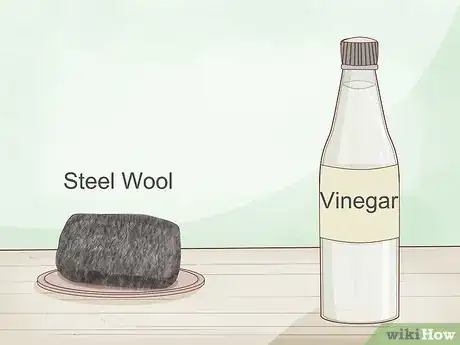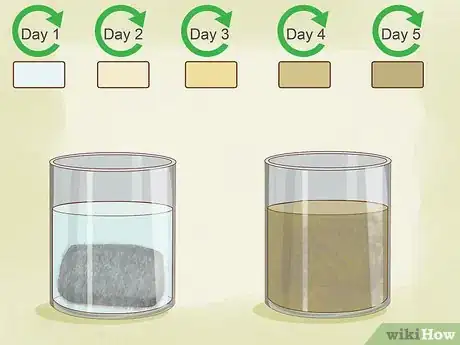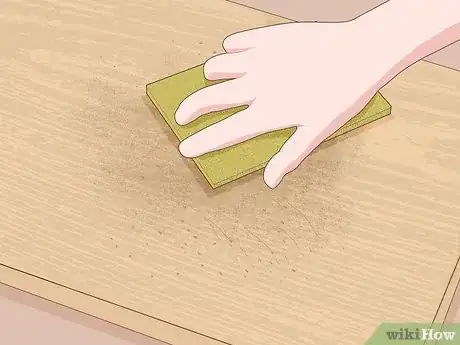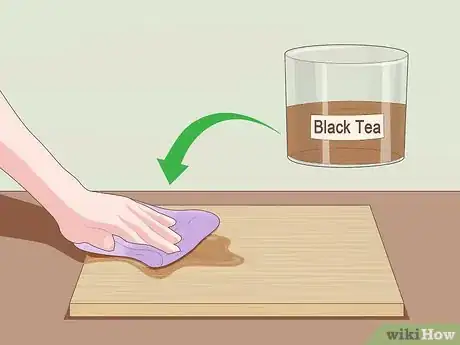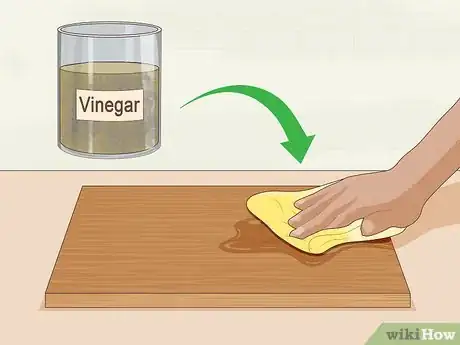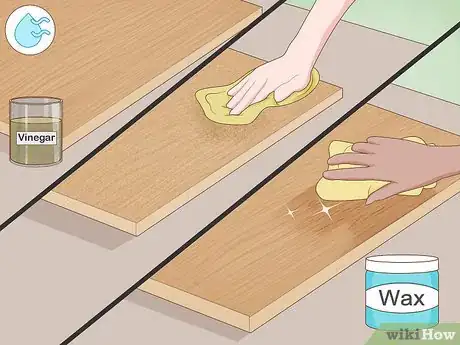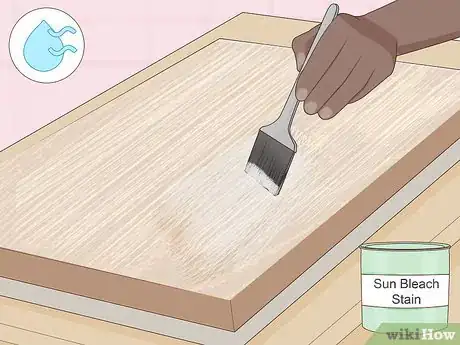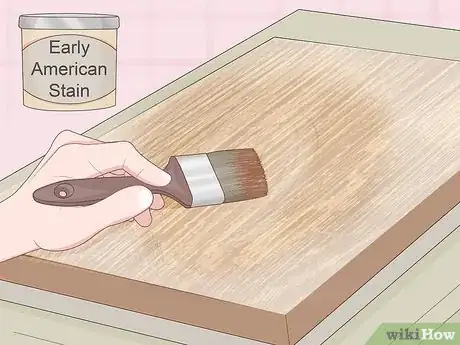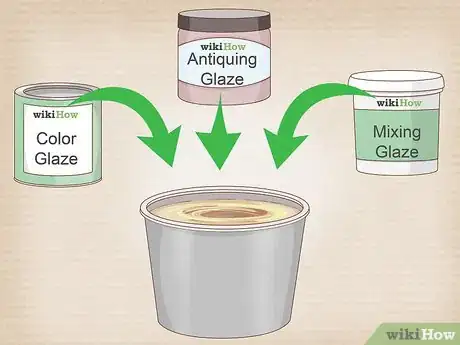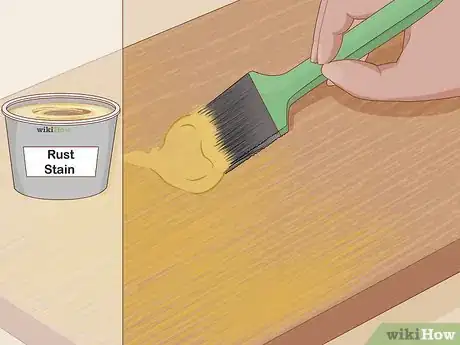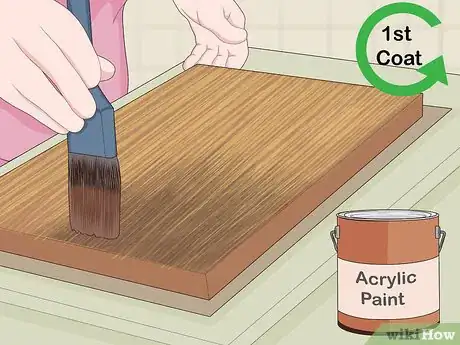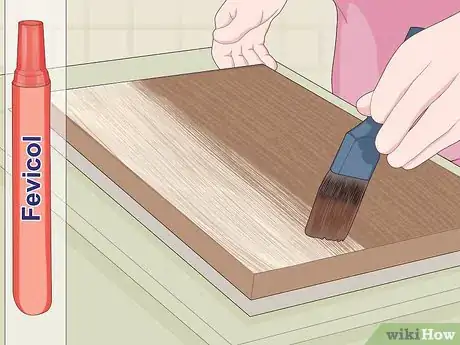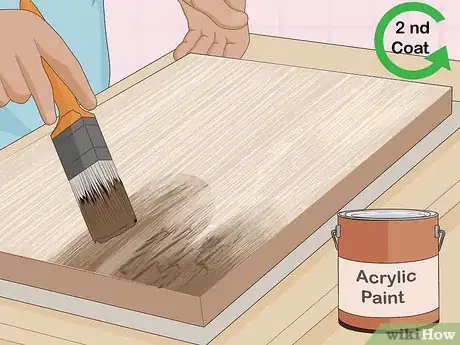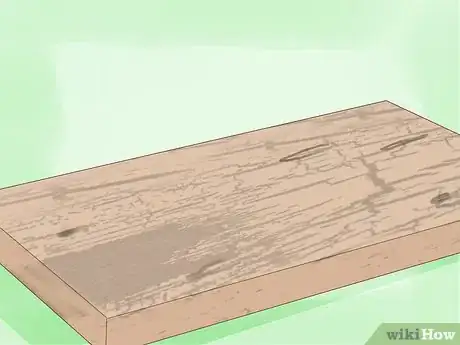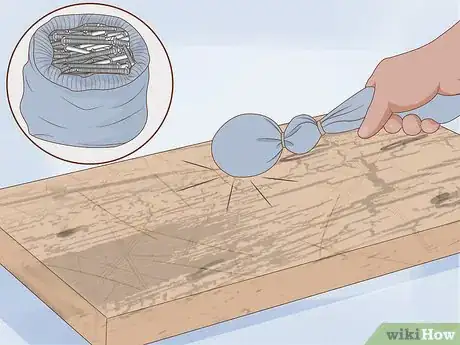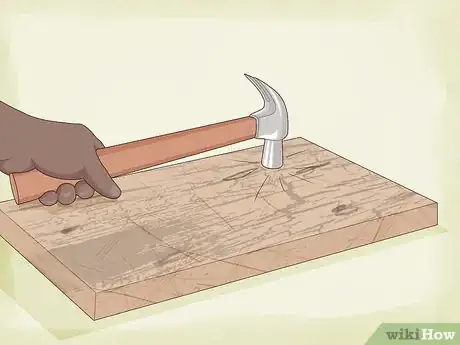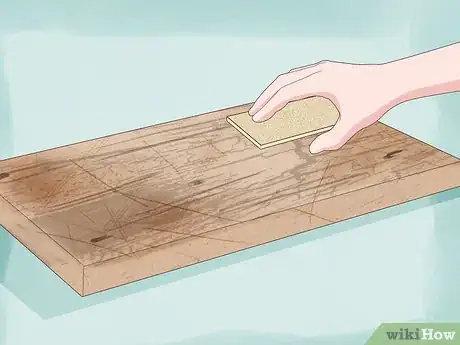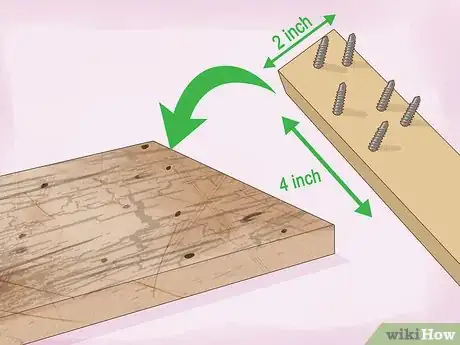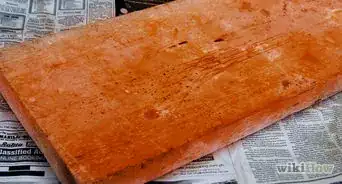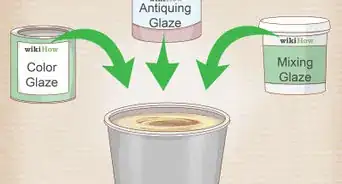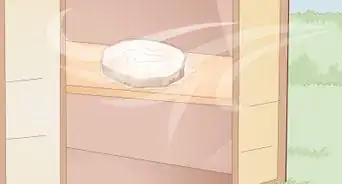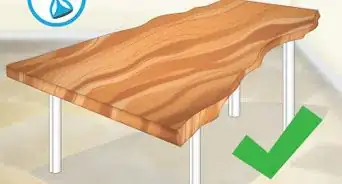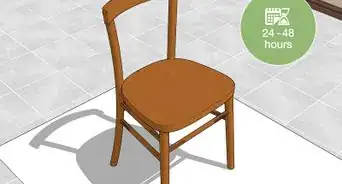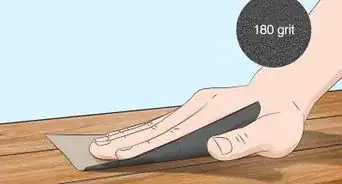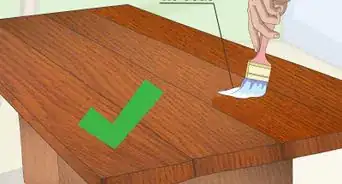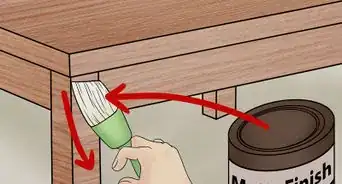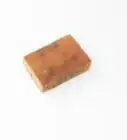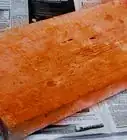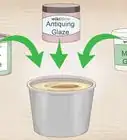wikiHow is a “wiki,” similar to Wikipedia, which means that many of our articles are co-written by multiple authors. To create this article, 17 people, some anonymous, worked to edit and improve it over time.
There are 7 references cited in this article, which can be found at the bottom of the page.
wikiHow marks an article as reader-approved once it receives enough positive feedback. In this case, 95% of readers who voted found the article helpful, earning it our reader-approved status.
This article has been viewed 435,326 times.
Learn more...
Aged wood is a beautiful way to add character to your home or garden. Don’t have time for that rustic patina to develop naturally? Then try one of these methods to create the appearance of aged wood without waiting.
Steps
Aging Wood Using Steel Wool and Vinegar
-
1Know what happens when steel wool and vinegar interact. Placing steel wool in vinegar will, over time, dissolve the wool. This combines with the vinegar to create an aging stain.
-
2Create the steel wool-vinegar solution. Fill a glass jar with vinegar, and place a fist-sized chunk of steel wool inside it. Let it settle for a minimum of one day, but up to five days for a darker solution.[1]Advertisement
-
3Prepare your wood. Sand it to remove any stain or coating which might prevent your aging solution from adhering properly.
-
4Make a tea stain. Boil black tea to brush onto the wood prior to using your steel wool solution. Tea contains tannic acid, which reacts with the vinegar stain and darkens it. The tea will not add any color by itself, it will only make the wood appear wet.
-
5Apply the steel wool-vinegar solution. Use a paintbrush to give a thorough coat to the wood. You should see an immediate change in color, which will dry after a few hours. Only one coat is necessary to give the “aged” look, but multiple coats can be applied to darken the wood.
-
6Finish the wood. Allow time to dry, and then use a damp rag and cold water to remove any residue from the steel wool. This can be the finished product, but if desired, a wax coating can be applied to preserve the effect.[2]
Aging Wood Using Stains and Paints
-
1Apply a coat of sun bleach stain to your wood. Allow time to set and then wipe off the excess. This will remove any previous color or stain from the wood, and enhance the natural grain and texture.
-
2Add a layer of early American stain. This particular stain gives the appearance and color of wood that has been left for many years. If desired, this can be the final step.
-
3Make a rustic stain. Combine your own unique combination of a color glaze, antiquing glaze, and mixing glaze. Be sure to use all three glazes from the same brand, so as to insure proper color mixing.
-
4Apply the rustic stain. Use a paintbrush to thoroughly coat the wood with the stain. There are multiple methods to do this:
- Apply a single coat for a lighter look. This also can give the appearance of slightly newer wood.
- Add multiple coats of stain to create a more worn look. This will also darken the wood, giving it a richer color.
- Create “freckles” on your wood by flicking stain using a paintbrush or toothbrush. This will give irregular small spots of dark color on the wood.[3]
Creating Crackles in Your Wood
-
1Paint your wood. Use any hue of your choice, but it must be an acrylic paint.
-
2Apply white school glue. Use a generous amount to completely coat the wood. You should apply enough glue so that it appears opaque. Allow it to partially dry, until tacky.[4]
-
3Add a second coat of paint. Brush the paint over the still tacky glue, and allow time to dry.
-
4Wait for the crackle effect to start taking place. It may take several hours for it to appear, after the glue and paint completely dry.[5]
Distressing Wood
-
1Distress wood with nails in a sock. Pour nails or screws into a sock, and hit the wood until it reaches your desired level of distress.[6]
-
2Hit the wood with a hammer or mallet. Soft strikes with a hammer will create small divots in the wood, while a mallet will make wider impressions.[7]
-
3Rub the wood with sandpaper. This will remove areas of stain and give the wood a rough texture, as is likely to occur in a natural setting over time.
-
4Make "wormholes" with drywall screws hammered into a 2x4. If you want to give your wood the appearance of having been eaten by worms over many decades, you can try to give it wormholes yourself. Hammer or screw the drywall nails into the 2x4 completely so that their ends stick through the bottom of your makeshift hammer. Next, strike the piece of wood with your wormhole hammer repeatedly, creating small puncture marks.[8]
- To create a more interesting wormhole pattern, be sure to hammer your drywall screws into the 2x4 in an irregular pattern. Turn the wormhole hammer around and strike your wood at different angles to create a more natural looking effect.
Community Q&A
-
QuestionCan I buy stains at the hardware store?
 Community AnswerYes, you can.
Community AnswerYes, you can. -
QuestionI used the vinegar and steel wool and it turned out more of an orange color. Why would this be?
 Community AnswerThe longer the wool is left in the vinegar, the more likely it will oxidize and cause the wool to rust. That is probably the reason for the orange shade.
Community AnswerThe longer the wool is left in the vinegar, the more likely it will oxidize and cause the wool to rust. That is probably the reason for the orange shade. -
QuestionI used vinegar and steel wool on my wood, and the second coat turned it a dull, cloudy color. What happened? Will it clarify with a satin polyurethane top coat?
 Community AnswerThe wood will end up looking clouded and light. It will darken and clarify immensely with a poly top coat.
Community AnswerThe wood will end up looking clouded and light. It will darken and clarify immensely with a poly top coat.
Supplies
- Wood
- Sandpaper
- Steel wool
- Vinegar
- Glass jar
- Paintbrush(es)
- Black tea
- Wax coating (optional)
- Sun-bleach stain
- Early American stain
- Colored glaze
- Antiquing glaze
- Mixing glaze
- Toothbrush (optional)
- Acrylic paint
- White school glue
- Nails or screws
- Old sock
- Hammer or mallet
- Sandpaper
References
- ↑ https://www.craftaholicsanonymous.net/how-to-age-wood-tutorial-guest-post-from-que-linda
- ↑ http://www.craftaholicsanonymous.net/how-to-age-wood-tutorial-guest-post-from-que-linda
- ↑ http://www.prettyhandygirl.com/2012/10/how-to-make-new-wood-look-old-weathered-and-rustic.html
- ↑ https://www.shelterness.com/how-to-create-paint-furniture-and-leave-some-crackles/
- ↑ http://www.shelterness.com/how-to-create-paint-furniture-and-leave-some-crackles/
- ↑ https://www.shelterness.com/how-to-create-paint-furniture-and-leave-some-crackles/
- ↑ https://www.familyhandyman.com/diy-advice/how-to-make-new-wood-look-old/
- ↑ https://www.architecturaldigest.com/story/how-to-make-wood-look-old
About This Article
To age wood, fill a glass jar with vinegar and submerge a chunk of steel wool in the water. Let the wool sit for a minimum of one day, but if you want a darker solution, you can leave it for up to five days. Next, sand the surface of the wood to remove previous stain or paint, then use a paintbrush to apply a thorough coat of the vinegar solution to the wood. One coat will create an aged look, but you can apply multiple coats if you want a darker, more dramatic look! For tips on aging wood with stains and paints, read on!
